#galactic evolution
Photo

Mysterious gamma-ray emitting bubbles around the center of our Galaxy explained A scientist from Tokyo Metropolitan University has shown that large gamma-ray emitting bubbles around the center of our Galaxy were produced by fast blowing outward winds and the associated “reverse shock.” Numerical simulations successfully reproduced the temperature profile observed by an X-ray telescope. Such outflows have been observed in other galaxies; this finding suggests similar winds may have been blowing in our own Galaxy until quite recently. The universe is full of massive celestial objects which are yet to be explained. One of these are the “Fermi bubbles,” so-called because they were first discovered by the Fermi Gamma-ray Space Telescope in 2010. These bubbles are enormous gamma-ray emitting regions which extend either side of the center of our Galaxy over approximately 50,000 light years, protruding out from the plane of the Galaxy like balloons as shown in the figure. Despite their mind-blowing scale, the mechanism by which they are formed is yet to be deciphered. Now, Professor Yutaka Fujita from Tokyo Metropolitan University has presented theoretical evidence demonstrating how such objects may have been formed. Since their discovery, many hypotheses have been put forward about the formation of the Fermi bubbles, including an explosive activity of the central supermassive black hole, winds from the black hole, and steady star formation activity. Telling these scenarios apart is a challenging task, but the availability of state-of-the-art X-ray observations from the Suzaku satellite gives us a chance to compare measurements with what we expect from various scenarios. The simulations of Professor Fujita considered fast outflowing winds from the black hole injecting the necessary energy into the gas surrounding the center of the Galaxy. Comparing with the measured profiles, they found that there was a good chance that the Fermi bubbles are produced by the fast outflowing winds, blowing at 1000km per second over 10 million years. These are not winds as we would experience them on earth, but streams of highly charged particles traveling at high speeds and propagating through space. These winds travel outwards and interact with surrounding “halo gas,” causing a “reverse shock” that creates a characteristic temperature peak. The Fermi bubbles correspond to the volume on the inside of this reverse shock front. Importantly, simulations also showed that an instantaneous explosion at the center could not reproduce the profiles measured by the telescope, lending weight to a scenario based on steady winds generated by the central black hole. The author notes that the winds predicted by the simulation are similar to outflows observed in other galaxies. The correspondence suggests the same kinds of massive outflows seen in other parts of the universe were present in our own Galaxy until fairly recently. IMAGE....Fast winds flowing out from the Galactic center creates a forward shock and a reverse shock. The latter forms the outline of the Fermi bubbles. CREDIT Tokyo Metropolitan University
88 notes
·
View notes
Text
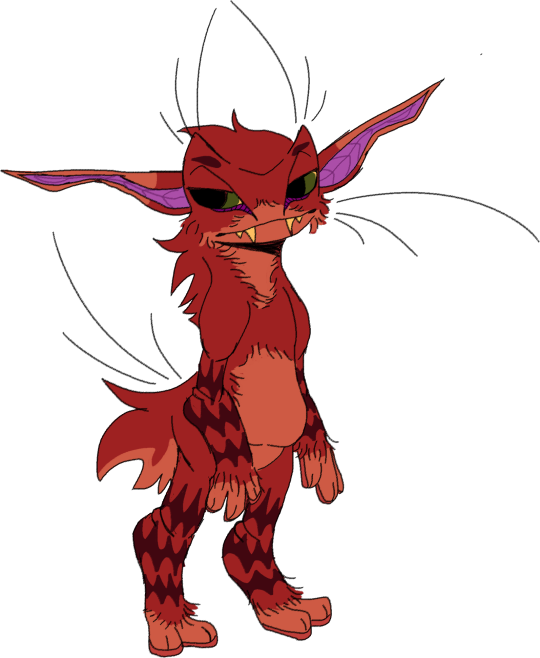
Updated default daybreak grox design, Now with segmentation to portray their weird internalized exoskeleton better! REALLY happy with how this came out, I think i'm getting my artstyle to a point i'm content with :))
This will probably be part of a whole sheet eventually, I'm just a bit lazy at the moment.
#spore#daybreak tag#spacecreate#my art#spore 2008#spore game#spore galactic adventures#spec bio#speculative biology#speculative evolution#spec evo#xenobiology#grox#spore grox#furry#anthro
114 notes
·
View notes
Text
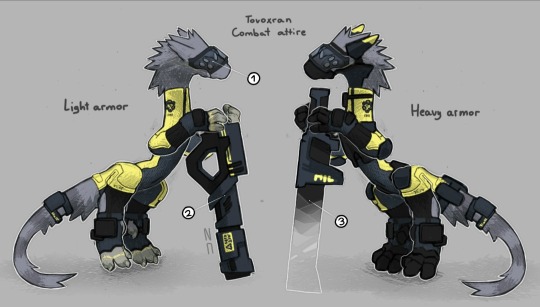
Tovoxran armor lore!!
1. Sun-protective shades, since their eyes are very light-sensitive
2. A tovoxran rifle commonly used in their army
3. A melee weapon, which blade was made of a special material created by Tovoxrans, which is both lightweight and strong.
Also to those, who sent asks recently - yes, I'm going to answer, I just wanted to finish this one first. ^^
#myart#alien#alien species#original alien species#worldbuilding#speculative biology#speculative evolution#spec bio#spec evo#spore#spore galactic adventures#creature design#creature#sci fi#science fiction
179 notes
·
View notes
Text
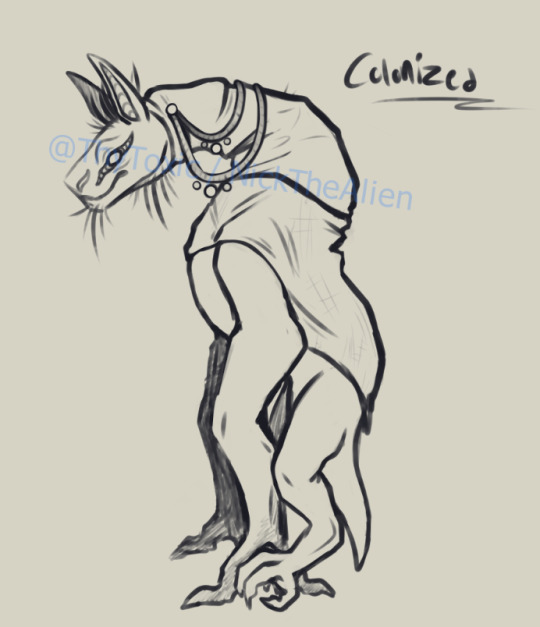
I've been practicing speculative biology recently, and although as of right now my designs have more flattened bodies, i'm having a lot of fun just doodling poses and such for my fellas :D
Carnodonts will stand on their longer and much stronger front legs to use their lower legs and feet to operate and interact with the worlds they explore. Their style is basic, needing hardly any change, but these creatures easily adapt their behaviors to their environment to be able to fit in. Because of this, they are ideal for ship crews, and are usually the most approachable.
(GORE WARNING BELOW)

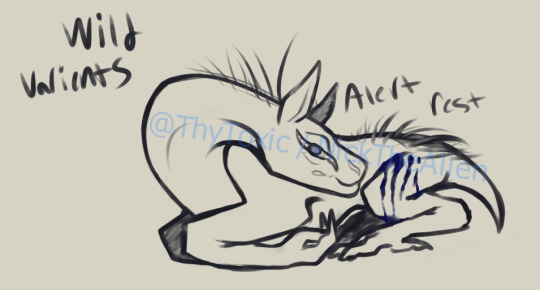
Carnodonts have a strange psychology, that can end up splitting them greatly. Their psychology is what helps them adapt so greatly in new places, but it can cause a reversive effect on Carnodonts raised out in the wilds. Their primitive and animalistic instincts are still very much there, but locked away unless if certain circumstances comes to unravel them.
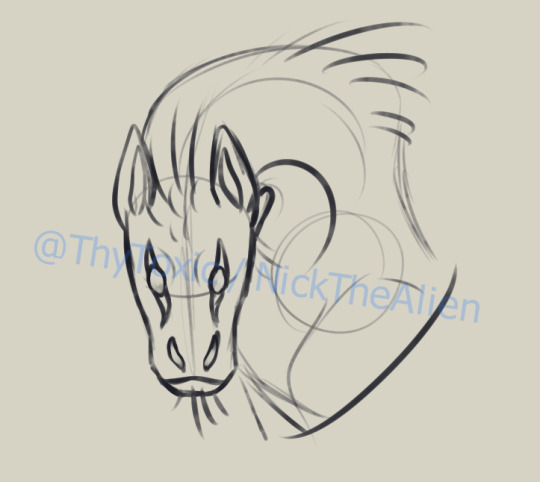

#alien#creature#monster#art#alien oc#beast#spore#spore 2008#spore galactic adventures#spore creatures#speculative biology#speculative evolution#speculative fiction#speculative zoology#speculation
29 notes
·
View notes
Text

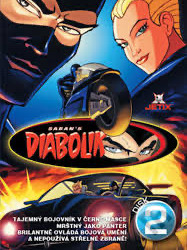








A daily dose of a concentrated rush of nostalgia.
#megaman#megaman exe#megaman nt warrior#lan hikari#astro boy#Grandma got run over by a Reindeer#x men evolution#A.T.O.M#Alpha Teens On Machines#men in black#Men in Black the Animated Series#ghostbusters#extreme ghostbusters#Galactic football#heavy gear#Saban’s Diabolik#Diabolik#x men
74 notes
·
View notes
Text
You cannot move forward without looking back. and so it is
It is a mistake at this time to ignore all aspects of our history <of living beings and the many incarnations of life on this earth>.
We cannot correct our world without working with all aspects of self...as singular beings and as the greater collective.
Humans were not the first incarnation of life on this earth. And many of us know this, but the history is complex and painful.
As they come from the darkness, they are surrounded by light.
"We are the poison, but we are also the antidote"
Man can do little to fix anything without opening up to all beings that are walking with us towards the light. We judge and cast stones as we ask others to see our light and forgive us our past darkness. We are but another version of the ones that we judge. There is little difference between us. We look upon them with fear just as other societies look at humans with fear. It is like looking in the mirror. We must listen with our intuition and our hearts to recognize the vast differences in the beings that we judge. Just as there are positive and negative humans...light & dark...so it is with the original dwellers of the many incarnations of earth. We must open our eyes to see instead of letting the fear spread by others close our minds.
We cannot move forward without looking back. And so it is.
#starseed#ascension#soul journey#star family#extraterrestial intelligence#spiritual development#uncomfortable truths#galactic history#starseeds#soul matrix#soul evolution#galactic dna#multiverse
25 notes
·
View notes
Text

If I was an actually artists I’d draw a more perfected version of this, but frankly I’m pretty proud of my scribble-sketch of Watcher!Grian, who only came about because I was testing out my new pen and it happened to be purple. ¯\_(ツ)_/¯
#Watcher!Grian#Grian#Evo SMP#Hermitcraft#Winged!Grian#Watchers#MCYT#Evolution SMP#…did anyone translate the galactic?#Pixie Does Art#Pixiemage Does Art#Anyone wanna DTIYS? lol#I mean you can if you want#I’d love to see this brought to life by someone more skilled than me
45 notes
·
View notes
Photo
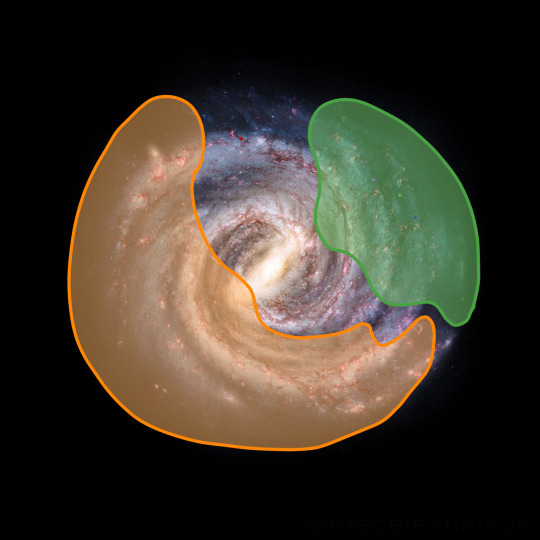
an updated map of the galaxy of which my projects take place, with a top on view to help make it easier to comprehend as well as the ranges of the empires being changed as well, similar to the first each dot is the [general range of the] star system of the planets the of the projects, the ◗ta empire is the green outline and the kirn empire is the orange outline, and the dots go
red: dumuno
green: ngiu◗
purple: ath
blue: lotred
and as established in the old galatic maps post the kirns homeplanet is long gone
[old post https://speculative-world.tumblr.com/post/687083547534802944/a-little-update-plus-a-map-of-my-worlds-galaxy-im]
#speculative biology#speculative zoology#speculative evolution#speculative planet#speculative world#spec bio#spec zoo#spec evo#spec planet#spec world#exobiology#galaxy#map#galactic map#dumuno#urn#ngiu◗#◗ta#ath#ap#lotred#drekol#kirn
7 notes
·
View notes
Text

Celestial Symphony: Cosmic Tapestry of Planets and Stars!
#celestial#symphony#cosmic#tapestry#planets#stars#astronomy#universe#exploration#harmony#nebulae#galaxies#orbits#interstellar#constellations#astral#stellar evolution#astrology#galactic#solar systems#interplanetary#heavenly#astronomer's delight#starlight#cosmic dance#astral melodies#celestial wonders#star clusters#nebulous#astral plane
2 notes
·
View notes
Text
“Three Body Problem” by Derek Tsang (S1 E4)
“Step into the unknown with Episode 4 of ‘Three Body Problem’ - ‘Our Lord.’ Uncover the secrets of the San-Ti civilization and the Oxford Four’s struggle against an impending invasion. #ThreeBodyProblem #SciFiSeries #Episode4Summary”
S01 E04 “Our Lord”
The episode opens with the aftermath of Jack Rooney’s death, leaving the Oxford Five now the Oxford Four. The group is struggling to cope with the loss and the realization that the virtual reality game they’ve been playing is far more than just a game. It’s a recruitment tool sent by the San-Ti, a civilization on the brink of destruction, looking for Earth’s brightest minds to…

View On WordPress
#Alien Encounters#Alien Invasion#Alternate Realities#Androids#Artificial Intelligence#Cosmic Horror#Cosmic Mysteries#Cybernetics#Cyberpunk#Dystopian Futures#Extraterrestrial Life#Future Societies#Future Worlds#Galactic Empires#Galactic Warfare#Genetic Modification#High-Tech Gadgets#Human Evolution#Intergalactic Adventure#Interstellar Travel#Nanotech#Post-Apocalyptic#Quantum Mechanics#Robot Rebellion#sci-fi#Sci-Fi Drama#Sci-Fi Fantasy#Sci-Fi Horror#Sci-Fi Mystery#Sci-Fi Thriller
0 notes
Link
Become a supporter of this podcast: https://www.spreaker.com/podcast/spacetime-with-stuart-gary--2458531/support.
The Space, Astronomy & Science Podcast.
SpaceTime Series 27 Episode 31
*The Enigma of the Universe's Oldest Dead Galaxy
In a universe brimming with stellar birth, astronomers have stumbled upon a galaxy that ceased forming stars over 13 billion years ago. This ancient cosmic graveyard, captured by the Webb Space Telescope, is challenging our understanding of galactic life cycles. The galaxy, which experienced a rapid starburst before falling eerily silent, offers a tantalizing glimpse into the early universe's dynamics. Join us as we unravel the mystery of this prematurely quenched galaxy and its implications for cosmic evolution.
*SpaceX's Starship: Gearing Up for the Next Giant Leap
SpaceX has eyes set on March 14 for the next monumental test flight of its colossal Starship Super Heavy rocket. With the goal of reaching orbital heights and splashing down in the Indian Ocean, this mission is critical for the future of space exploration. The success of Starship is not only pivotal for NASA's Artemis moon missions but also for Elon Musk's vision of interplanetary travel. Tune in as we dissect the challenges and aspirations of this groundbreaking space endeavor.
*Optimus: Australia's Trailblazing Satellite Servicer Takes Flight
The Australian-based Space Machines Company celebrates a milestone as their Optimus satellite servicing vehicle successfully orbits Earth. This pioneering mission introduces a new chapter in space operations, offering life extension services and on-orbit assistance. Discover how Optimus is setting the stage for a more sustainable and efficient presence in the final frontier.
*2024: A Stellar Year for Skywatchers
From a total solar eclipse to a parade of supermoons, 2024 is shaping up to be an astronomer's delight. With a penumbral lunar eclipse and the potential brilliance of a new comet on the horizon, the cosmos is putting on a show. We'll discuss the celestial events that have astronomers and enthusiasts alike marking their calendars.
For more SpaceTime and show links, visit https://spacetimewithstuartgary.com and access our universal listen link at https://spacetimewithstuartgary.com/listen. Join us on our journey through the stars and support the show at https://www.spreaker.com/podcast/spacetime-with-stuart-gary--2458531/support.
Listen to SpaceTime on your favorite podcast app and follow us for more space and astronomy podcasts at our HQ at https://bitesz.com.
(00:00) This is spacetime series 27, episode 31, for broadcast on 11 March 2024
(00:50) Astronomers find galaxy that suddenly stopped forming new stars 13 billion years ago
(11:45) Next month's total solar eclipse will not be a full lunar eclipse
(14:58) As a professional astronomer and astrophysicist, what does the night sky evoke
(17:40) Professor Richard degrasse's research focuses on distant star clusters
(20:31) World Meteorological Organisation says current El Nino event is one of strongest
(21:41) Combination of two antibodies shows promising results against solid tumours
(23:04) A new story making the rounds claims a painting is haunted
#australia#dead#evolution#formation#galactic#galaxy#industry#launch#oldest#optimus#quenching#satellite#servicing#space#spacex#star#starship#telescope#test#webb
0 notes
Photo
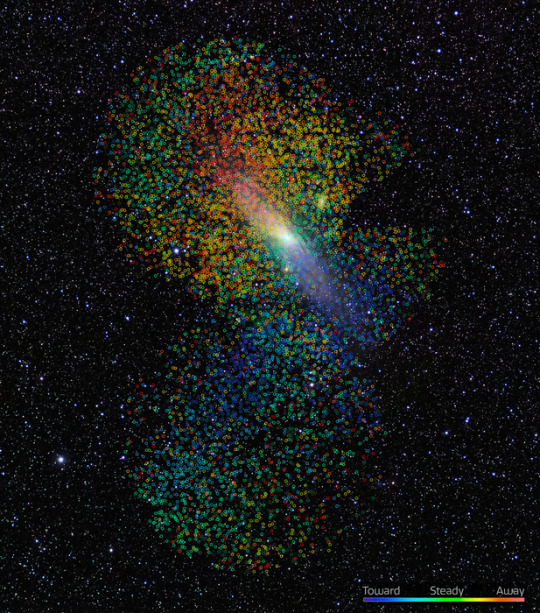

Footprints of galactic immigration uncovered in Andromeda galaxy The Dark Energy Spectroscopic Instrument reveals compelling evidence of a mass migration of stars into a galaxy other than the Milky Way Over the course of billions of years, galaxies grow and evolve by forging new stars and merging with other galaxies through aptly named “galactic immigration” events. Astronomers try to uncover the histories of these immigration events by studying the motions of individual stars throughout a galaxy and its extended halo of stars and dark matter. Such cosmic archaeology, however, has only been possible in our own galaxy, the Milky Way, until now. An international team of researchers has uncovered striking new evidence of a large galactic immigration event in the Andromeda Galaxy, the Milky Way’s nearest large galactic neighbor. The new results were made with the DOE’s Dark Energy Spectroscopic Instrument (DESI) on the Nicholas U. Mayall 4-meter Telescope at Kitt Peak National Observatory, a Program of NSF’s NOIRLab. By measuring the motions of nearly 7500 stars in the inner halo of the Andromeda Galaxy, also known as Messier 31 (M31), the team discovered telltale patterns in the positions and motions of stars that revealed how these stars began their lives as part of another galaxy that merged with M31 about 2 billion years ago. While such patterns have long been predicted by theory, they have never been seen with such clarity in any galaxy. “Our new observations of the Milky Way’s nearest large galactic neighbor, the Andromeda Galaxy, reveal evidence of a galactic immigration event in exquisite detail,” explained Arjun Dey, astronomer at NSF’s NOIRLab and the lead author of the paper presenting this research. “Although the night sky may seem unchanging, the Universe is a dynamic place. Galaxies like M31 and our Milky Way are constructed from the building blocks of many smaller galaxies over cosmic history. ” “We have never before seen this so clearly in the motions of stars, nor had we seen some of the structures that result from this merger,” said Sergey Koposov, an astrophysicist at the University of Edinburgh and coauthor of the paper. “Our emerging picture is that the history of the Andromeda Galaxy is similar to that of our own Galaxy, the Milky Way. The inner halos of both galaxies are dominated by a single immigration event.” This research sheds light on not only the history of our galactic neighbors but also the history of our own galaxy. Most of the stars in the Milky Way’s halo were formed in another galaxy and later migrated into our own in a galactic merger 8–10 billion years ago. Studying the relics of a similar, but more recent, galaxy merger in M31 gives astronomers a window onto one of the major events in the Milky Way’s past. To trace the history of migration in M31, the team turned to DESI. DESI was constructed to map tens of millions of galaxies and quasars in the nearby Universe in order to measure the effect of dark energy on the expansion of the Universe. It is the most powerful multi-object survey spectrograph in the world, and is capable of measuring the spectra of more than 100,000 galaxies a night. DESI’s world-class capabilities can also be put to use closer to home, however, and the instrument was crucial to the team’s survey of M31. “This science could not have been done at any other facility in the world. DESI’s amazing efficiency, throughput, and field of view make it the best system in the world to carry out a survey of the stars in the Andromeda Galaxy,” said Dey. “In only a few hours of observing time, DESI was able to surpass more than a decade of spectroscopy with much larger telescopes.” Even though the Mayall Telescope was completed 50 years ago (it achieved first light in 1973), it remains a world-class astronomical facility thanks to continued upgrades and state-of-the-art instrumentation. “Fifty years sounds like a long time, and naïvely one might think that’s the natural lifetime of a facility,” said co-author Joan R. Najita, also at NOIRLab. “But with renewal and reuse, a venerable telescope like the Mayall can continue to make amazing discoveries despite being relatively small by today’s standards.” The research was carried out in collaboration with two Harvard University undergraduates, Gabriel Maxemin and Joshua Josephy-Zack, who connected with the project through the Radcliffe Institute for Advanced Study. Najita was a Radcliffe Fellow from 2021 to 2022. The team now plans to use the unparalleled capabilities of DESI and the Mayall Telescope to explore more of M31’s outlying stars, with the aim of revealing its structure and immigration history in unprecedented detail. “It’s amazing that we can look out at the sky and read billions of years of another galaxy’s history as written in the motions of its stars — each star tells part of the story,” concluded Najita. “Our initial observations exceeded our wildest expectations and we are now hoping to conduct a survey of the entire M31 halo with DESI. Who knows what new discoveries await!” TOP IMAGE....Striking new evidence for a mass immigration of stars into the Andromeda Galaxy has been uncovered by researchers led by astronomers at NSF’s NOIRLab. The team used the DOE’s Dark Energy Spectroscopic Instrument on the Nicholas U. Mayall 4-meter Telescope at Kitt Peak National Observatory, a Program of NSF’s NOIRLab, to reveal intricate structures in this galaxy with unprecedented detail and clarity. Each of the dots on this image represents an individual star in the Andromeda Galaxy, with the motion of the star (relative to the galaxy) color-coded from blue (moving toward us) to red (moving away from us). CREDIT KPNO/NOIRLab/AURA/NSF/E. Slawik/D. de Martin/M. Zamani LOWER IMAGE....A team of researchers led by astronomers at NSF’s NOIRLab has uncovered striking new evidence for a mass migration of stars into the Andromeda Galaxy. Intricate patterns in the motions of stars reveal an immigration history very similar to that of the Milky Way. The new results were obtained with the DOE’s Dark Energy Spectroscopic Instrument on the Nicholas U. Mayall 4-meter Telescope at Kitt Peak National Observatory, a Program of NSF’s NOIRLab. Credit: KPNO/NOIRLab/AURA/NSF/Local Group Survey Team/T.A. Rector (University of Alaska Anchorage)/D. de Martin/M. Zamani
40 notes
·
View notes
Text

Aaaand feltaur redesign! I'm on a role with redesigning my spore creatures/daybreak sophonts today, Huh?
#spore#daybreak tag#spacecreate#my art#spore 2008#spore game#spore galactic adventures#speculative biology#speculative evolution#spec evo#spec bio
115 notes
·
View notes
Text
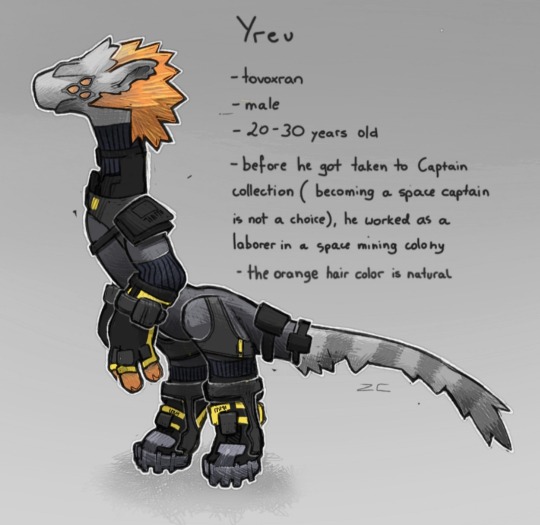
New oc dropped
Also he is my captain (playable character) in spore
#myart#alien#alien species#original alien species#oc#original character#creature#creature design#sci fi#science fiction#spore#spore galactic adventures#spore game#speculative biology#speculative evolution#spec bio#spec evo
132 notes
·
View notes
Text
last bite of winter
drawn shapes on your dashboard
frost blown through the car heater
a blanket of quiet
14 minute drive
the 3am delay
am i saying this right?
i’ll try not to repeat myself
strangulation is nurture
we’ve left a starry trail
the tide pulling once again
i need to know for once
can we hold on?
grocery store aisles
as good a place as any
the morgue has been calling
not so much in the literal way
but from your house to the hospital
the chokehold
i’m clinging to your hands
what are you doing with yours?
they’re tearing me away
stripping off the layers
i’ll try not to repeat myself
can we hold on?
can we hold on?
can we hold on?
will you hold on?
can we hold on?
can we please fucking hold on?
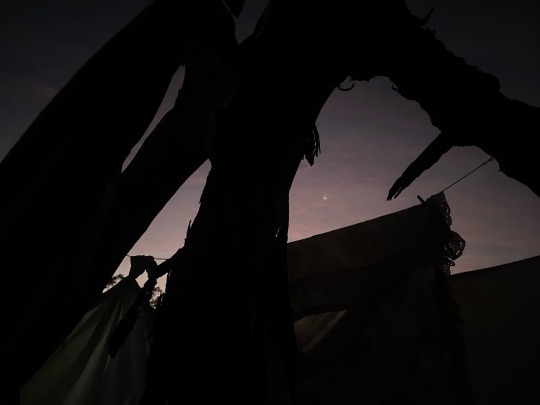
0 notes
Text
Kardashev scale: Evolution of Human Civilization
Kardashev scale: Evolution of Human Civilization
What is Kardashev Scale?
There are approximately 40 billion planets that could sustain life in the Milky Way, these planets are called Exoplanets(Planets outside our Solar system). there are some ~2 trillion galaxies like the Milky Way within the observable universe. Considering these billions of habitable exoplanets, it seems impossible that there wouldn’t be other intelligent life in the…
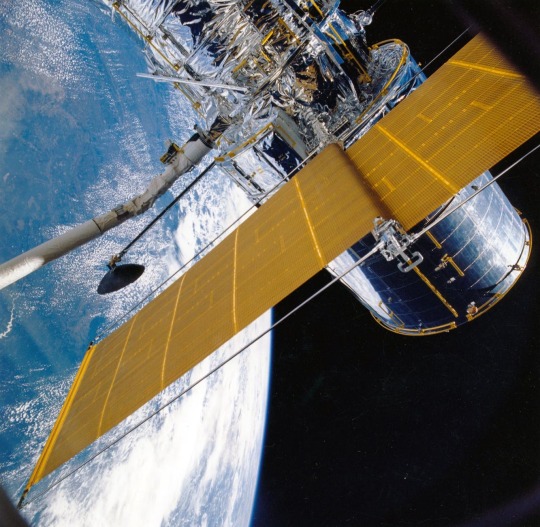
View On WordPress
#Civilization#Creator Civilization#Evolution#Galactic Civilization#Kardashev Scale#Multidimensional Civilization#Multiversal Civilization#Planetary Civilization#Stellar Civilization#Universal Civilization
1 note
·
View note